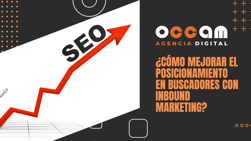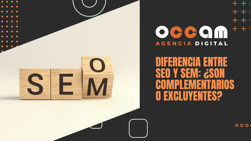Index Content
Search Engine Optimisation (SEO) is the process a website undergoes to obtain organic results in search engines. Also called Search Engine Optimisation (SEO), this event is used in digital marketing strategies to increase the visibility of a brand through its appearance in search engines. These are based on factors such as the authority or popularity of a website and its relevance to decide in which position of the ranking to place it.
There is on page SEO, which refers to the optimisation of actions carried out within the website, in other words, those that we can improve. It is useful for improving Google's crawling and offering the best user experience. Off page SEO, on the other hand, deals with improving what happens outside the website. Its field of interest includes the treatment of links, local SEO or social media. Depending on the shortcuts used, Black Hat SEO, characterised by using questionable techniques such as spam in forums, or White Hat SEO, which consists of carrying out actions to add value to the website. Regardless of the selected methodology, the main function of SEO is to help search engine crawlers to recognise a web page and make it useful for users.
Benefits of improving SEO
- Higher conversion rate: By getting more attention from users, the company comes into contact with more leads, which end up becoming customers.
- Increased targeted traffic: SEO increases the number of visitors specifically interested in your product.
- Return on investment: The success of the marketing campaign will result in a return on investment.
- Brand visibility: Traffic to your website will increase brand awareness without the need to invest in advertising.
- Increased sales: More leads will boost sales of your products and services.
- Accessibility: Optimised web browsing procedures will make your website more accessible.
- Usability: The user's experience must be pleasant and complying with SEO standards will facilitate the use of the website.
- Improved loading speed: The code can be optimised to make a website lighter and require less loading time.
- Search engine indexing: If the links work as they should, your website will be easy for search engines to index.
- Stability in the marketing campaign: An optimised site stays at the top of search engines and guarantees organic traffic.
5 keys to have the best SEO
1. Internal linking
Also known as interlinking, the process of internal linking works as one of the main techniques to improve SEO positioning. Through the semantics of the linked pages, it allows the authority of those that most interest the brand to be boosted. Website links are the basis by which Google robots crawl and find content. They are organised through URLs, which, in turn, are ordered with a sitemap. Therefore, it is advisable to have a good web architecture and navigation. Based on their organisation, they are divided into two types:
- Horizontal web architecture: The URLs have little depth between them. The sections are interlinked with each other and there are no priorities. Crawling for search engines is easier with this option. Due to its simplicity, it is the most commonly used in online shops.
- Vertical web architecture: Comprises different levels of depth and hierarchies. Sometimes this content may be divided into themes or categories. These are common in very large sites and can cause crawling problems.
Internal linking improves navigability, UX and search engine crawling, but links to external pages can also be beneficial. These are known as backlinks. They help ranking because Google considers their percentage a guarantee of reliability. That is, if you get other pages to backlink to your site, it means that your content is useful and reliable. Their number is directly related to organic traffic.
2. Content
Content marketing aimed at improving SEO consists of adapting the contents of a website to the searches of Internet users, i.e. boosting organic traffic by using the right language, words and formats to be crawled by search engines.
First of all, it is important to know the target audience of the brand. In order to know the Google trends, there are tools such as Google Keyword Tool or Google Trends. Once the type of content to be generated has been selected, it is advisable to create links, relationships with customers or a corporate blog. All marketing actions must have cohesion between them to have a brand identity. The content created must be of quality and useful. Moreover, it must be presented in different formats to avoid monotony; such as:
- Blog posts.
- Podcast.
- Videos and images.
- Ebooks.
- Graphics.
- Webinars.
- Infographics.
After this, the right meta tags and the right keywords must be used to attract the target audience:.png?width=464&height=348&name=Gr%C3%A1fico%20Cuadro%20Comparativo%20Tabla%20Equipo%20de%20Trabajo%20Ilustrado%20Formal%20Azul%20(1).png)
3. User Experience
The UX (User Experience) is used to measure the user interface of the website and its user-friendliness. The conversion rate of the website depends on this factor, since, depending on how easy it is to carry out a purchase process, the visitor will be tempted or not to go through the sales funnel. There are three elements to take into account:
- Navigation and web architecture: If the website is well organised and visually attractive, the user will have to make less effort to understand where to find what they are looking for. In the same way, a simple navigation design will allow the lead to go through the website. In the menu, abbreviations and an excess of submenus should be avoided. It is advisable to have a search option to create shortcuts.
- Readability: The user must be able to visually scan a page and save time, so the colours used should contrast with each other, the typeface should be simple and textual techniques such as bold, line spacing or headings should be used.
- Loading speed: Visitor satisfaction increases when the quality of the website is improved. The loading speed is decisive. If a page takes more than ten seconds to load, you will lose a high percentage of potential customers.
4. Technical SEO
Technical SEO is the configuration of a website with the intention of positioning it among the top positions in search engines. The main objectives of technical SEO are to achieve a correct positioning by highlighting the content and offering a good user experience. There are three elements that work as the basis of technical SEO:
- URLs: Revising the URLs of your website will improve speed and indexing.
- Site security: The security of a website determines the trust of users; providing a reliable transaction and careful handling of data will ensure a good ranking.
- Crawling: To achieve higher indexing, bots must be able to access the sitemap and recognise the links it finds. Links should be checked for orphan pages or errors.
5. Responsive design
The mobile-first index is Google's main ranking method. In other words, mobile searches are those that the search engine takes into account when ranking websites. It is therefore advisable to adapt the website to any device without losing quality..jpg?width=400&height=279&name=dise%C3%B1o_page-0001%20(1).jpg)
Social networks and SEO
Social SEO can be carried out through the main social networking platforms. The links that are shared in these applications can benefit the distribution of brand content, visibility, organic traffic and search engines. In addition, it will improve the communication channel with your customers and strengthen a long-term relationship.


.jpg?width=400&height=264&name=posicioanmiento%202_page-0001%20(1).jpg)



